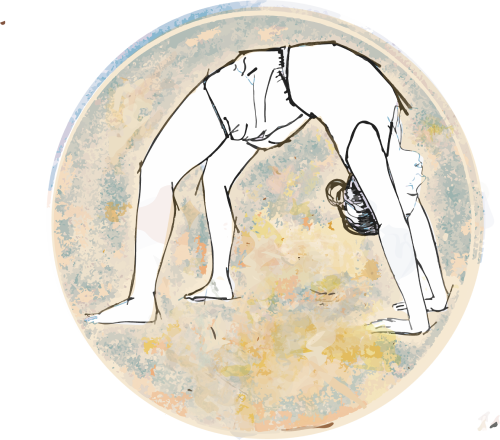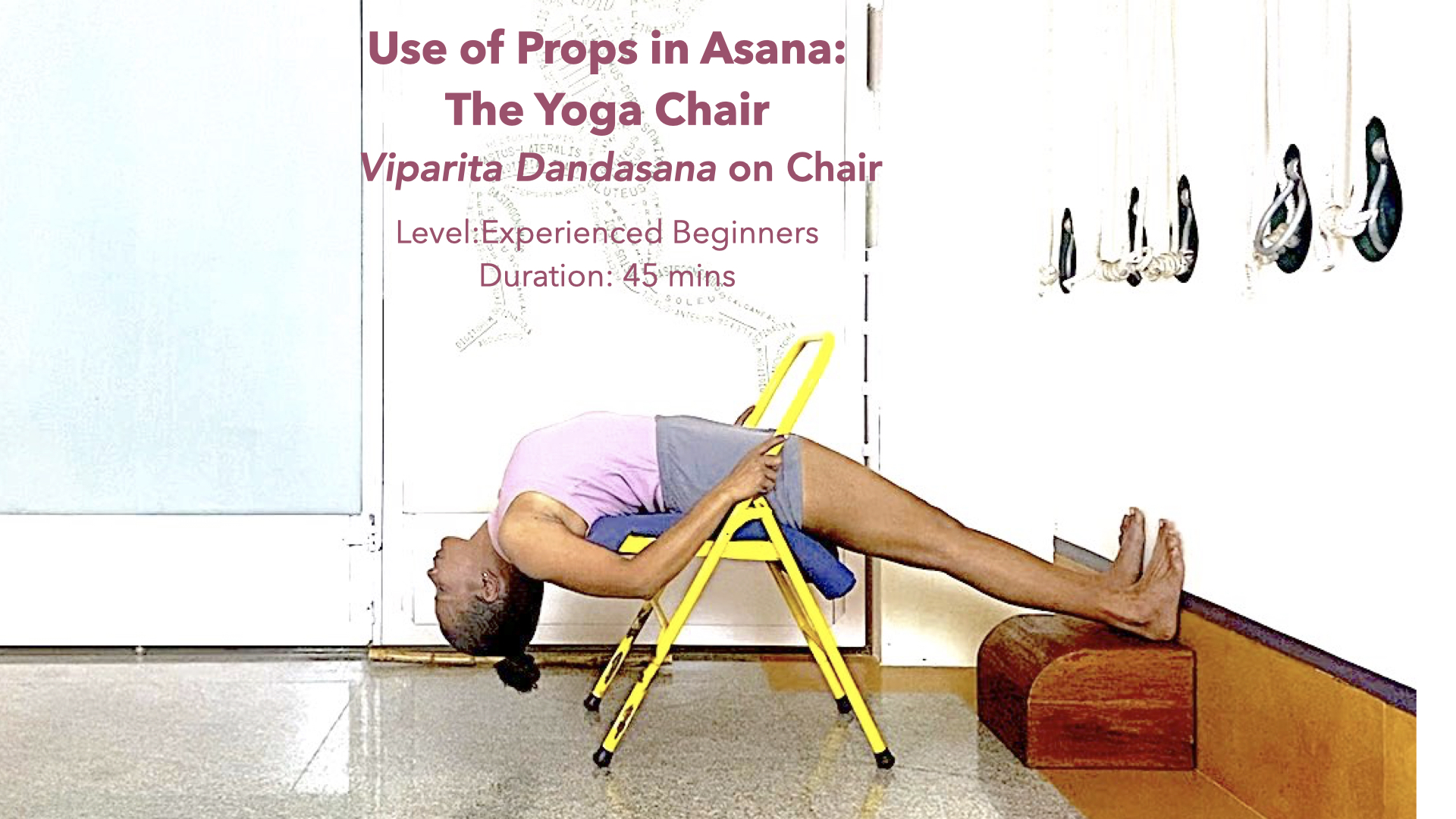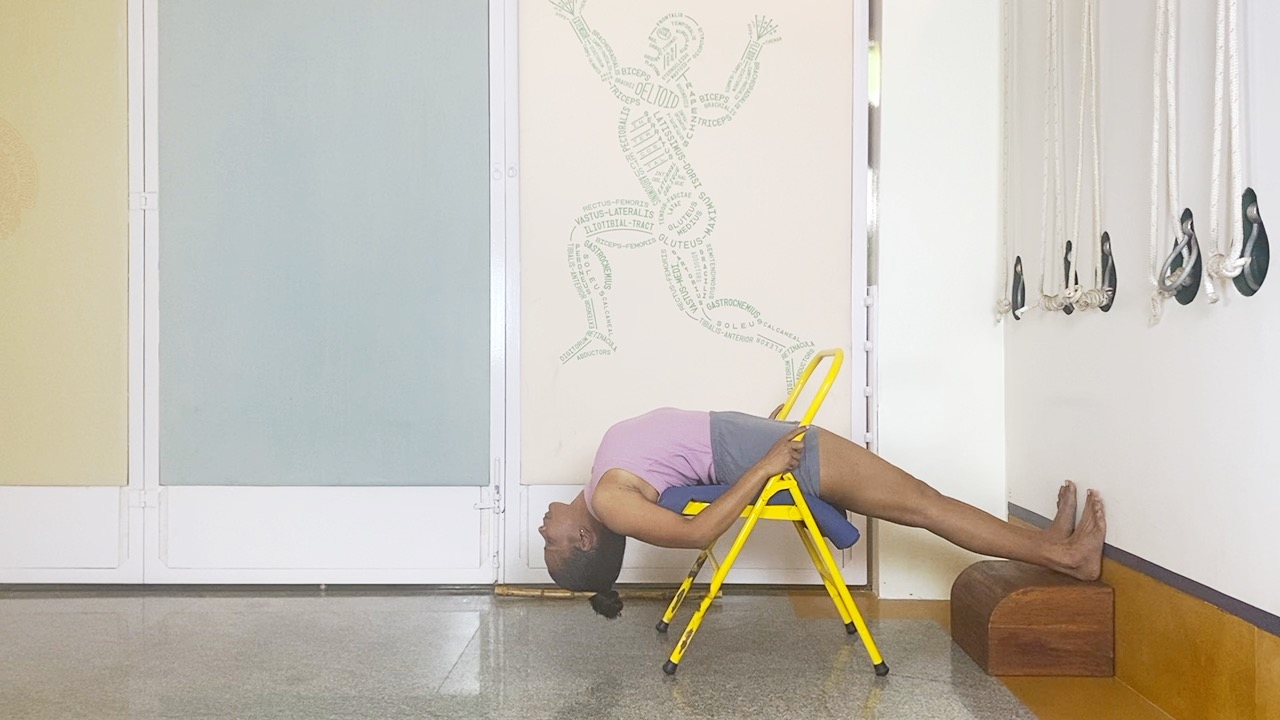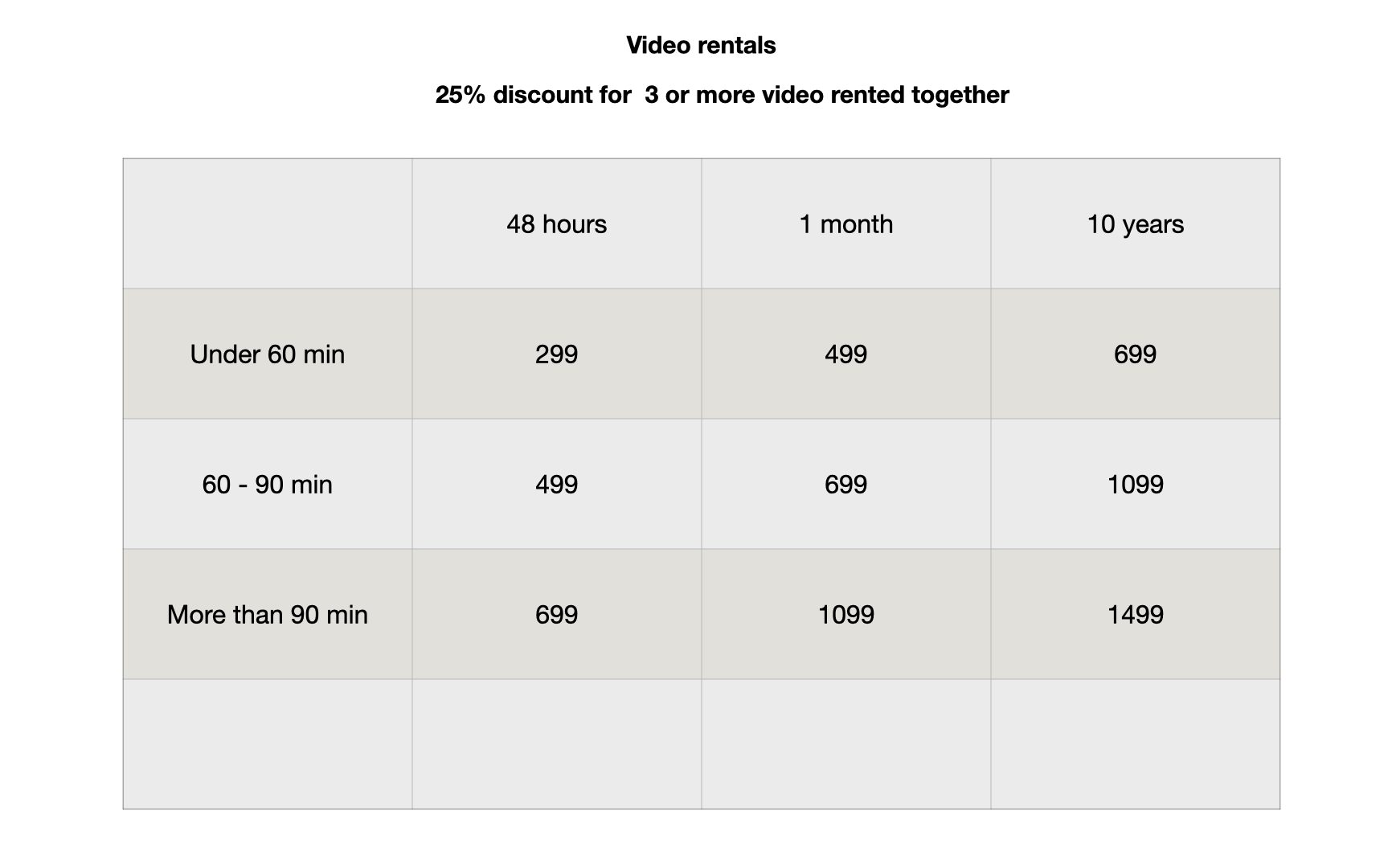If one is already suffering from an ailment/ weakness of the back, back arches might sometimes not be advisable. But for everyone else, it is highly recommended to make a regular practice of back arches a part of ones Asana practice – whether simple or complex/ advanced. They help in maintaining the elasticity and mobility of the spine, improve the posture, improves the nervous system, are therapeutic for various physiological and psychological conditions, and bring about a sense of exhileration and upliftment.
Especially in the Iyengar system of practice, there is an immense scope for exploration of back arches: for example, the use of props. Back arches are often the most difficult of the Asana categories to attempt. But with the use of props, it makes it easier for us to attempt these positions. Even if it is possible to independently attempt these positions, often we cannot stay in the Asana long enough for its effects to start surfacing. Supports help us in staying long in such Asanas without much mental turmoil or physical exhaustion.
In this session, we explore in detail setting up, getting, and getting out of Viparita Dandasana, using a chair. This is a relatively short session where we get intot he back arching actions fairly quickly. We recommend spending a little more time in preparatory actions using one of the earlier sessions in this series.This position may be taught to experienced beginners, but unless there is a physical limitations, it is recommend to first make a few attempts of the independent viparita dandasana before attempting this version with the chair.







